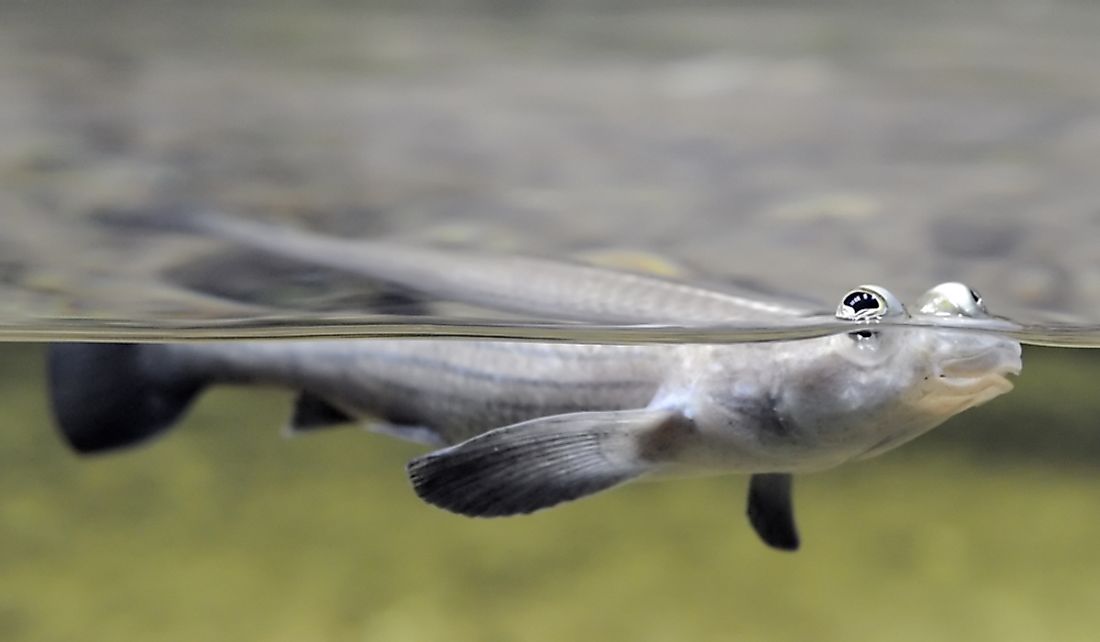Four-eyed Fish Facts: Unique Animals of the World

One of the most amazing aquatic creatures of the world is the four-eyed fish. The fish is highly adapted to water-surface dwelling lifestyle. The fish species have the ability to see above and below the water surface simultaneously. The four-eyed fish is a member of Anableps genus and belongs to the Anablepidae family. There are 3 documented species, namely A. Anableps, Anableps microlepis, and Anableps dowei. The unique eye configuration of the fish makes it one of the strangest fish species on earth.
Physical Description
The eyes of the fish are located slightly above the top of the head. From a casual look, the fish has 2 eyes but in actual sense, they are 4. Each eye is divided horizontally into two halves by a thin band of epithelial tissue. The unique morphology makes the fish submerge only the lower half while the upper half is exposed to the air. The lower part is adapted for vision inside water while the upper half is adapted to see in the air. Each eye has 2 corneas and 2 pupils which are linked by a section of the iris. The lens is oval shaped while the retina splits into two sections. To account for the varying refractive indices of water versus air, the lens of the eyes differs in thickness with the top being thicker than the bottom. An adult four-eyed fish measures approximately 12 inches with females being bigger than males. The body of the four-eyed fish is cylindrical with cigar-shaped elongation. The pectoral fins are large and paddle-like. Four-eyed fish are generally greyish in color with a light cream on its side and an olive-brown back.
Behavior and Diet
The life of a four-eyed fish is spent mostly on the water surface where they hunt for terrestrial insects. The lower half of the eye detects food substances such as smaller fish, diatoms, algae, and other invertebrates. The fish are social animals that congregate in schools. Reproduction is viviparous. The mating behavior is also unique in that they mate on a single side only meaning that "left-handed" males mate with "right-handed" females while "right-handed" males mate with "left-handed" females. The unique mating behavior is due to the fact that the genital organs of both sexes are naturally oriented towards either the right- or left-hand side. The sperm are delivered to the female through a tube commonly referred to as gonopodium. The young ones, known as fry, usually fed for themselves without getting much care and attention from their parents.
Habitat and Range
The four-eyed fish inhabit the coastline to the northeast of South America beginning from the Gulf of Paria through Guyana, French Guiana, Suriname, and past the Brazilian Amazon Delta. They also thrive around the coastal regions of Venezuela and Trinidad. A few of the fish species are found near Parnaiba River estuary at the border of Maranhão and Piauí states. The fish is a tropical species that thrive in brackish water near mangrove forests. The fish shifts with the daily tidal movements. It inhabits the shallow margins of water channels when the tide is low but moves to inundated regions to forage when the level of water goes up. When there is low tide, the four-eyed fish move to the marginal zones of the region to maximize on feeding and escape predators. When there is low water, some section of sand and mud are exposed attracting the fish to lay in the sun for a moment.











